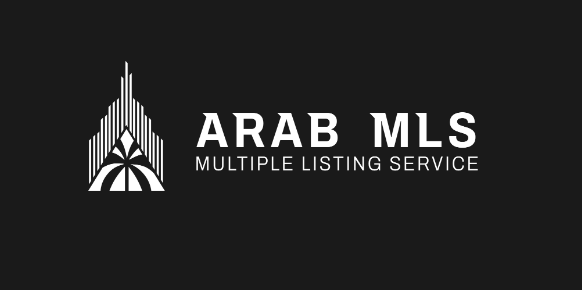In today’s fast-paced real estate market, accuracy and timeliness are critical for both agents and buyers. The integration of new technologies is revolutionizing the way property listings are presented, ensuring that information is as accurate, up-to-date, and relevant as possible. One such innovative technology transforming the Multiple Listing Service (MLS) systems is geo-fencing.
Geo-fencing technology uses GPS or RFID technology to create virtual boundaries around a specific geographic area. Once a device enters or exits this boundary, it triggers predefined actions. In real estate, geo-fencing can be utilized to enhance MLS accuracy by providing location-based insights, offering a more precise understanding of property details, and ensuring that listings reflect the actual characteristics of properties in specific geographic zones.
This article explores how geo-fencing technology works, its benefits for MLS systems, and the ways in which it can improve real estate listings by providing more accurate, relevant, and engaging data to agents and buyers.
What is Geo-Fencing Technology?
Geo-fencing involves the use of GPS, RFID, or Wi-Fi technology to create virtual geographic boundaries or “fences.“ These fences are programmed to detect when a device, typically a smartphone or tablet, enters or exits the set area. Once the boundary is crossed, geo-fencing can trigger specific actions, such as sending notifications, collecting data, or activating features.
In real estate, geo-fencing technology can be used in various ways to improve MLS accuracy, streamline operations, and provide valuable insights into properties. By integrating geo-fencing into MLS platforms, real estate professionals can benefit from real-time data, better property visibility, and a deeper understanding of location-specific factors that influence property value.
How Geo-Fencing Technology Can Improve MLS Accuracy
Precise Location Tracking for Listings
One of the core functions of geo-fencing is the ability to track the exact location of a property with high precision. By implementing geo-fencing technology, MLS systems can ensure that listings are correctly associated with their geographic location. This helps avoid common errors, such as listing properties in the wrong neighborhood, inaccurate zip codes, or misidentified boundaries.
For example, a property might be listed under a neighboring district or county by mistake, which can mislead potential buyers. By using geo-fencing, the MLS system can automatically verify that the property is within the correct area, enhancing the accuracy of the listings and preventing confusion.
Moreover, geo-fencing technology allows MLS platforms to accurately determine the proximity of properties to key locations, such as schools, parks, shopping centers, and public transport hubs. This level of granularity can offer better insights to buyers, allowing them to assess whether a property is in a desirable location based on their needs.
Real-Time Property Availability and Updates
Another significant advantage of geo-fencing for MLS systems is its ability to offer real-time updates and notifications when a property becomes available or when there are changes to an existing listing. For instance, if a property is marked as sold or under contract, geo-fencing can help ensure that the MLS system is immediately updated to reflect this change, preventing outdated information from being shown to potential buyers.
Additionally, when a buyer enters a geo-fenced area, they could receive a notification on their mobile device about nearby properties that are currently listed. This real-time integration helps keep the MLS system constantly updated, ensuring that buyers and agents have the latest, most accurate information at their fingertips.
For example, if a buyer is driving through a neighborhood and enters a geo-fenced zone around a specific property, they can receive immediate alerts regarding that listing, including details such as price, availability, and unique features, offering an enhanced, user-focused experience.
Targeted Marketing and Custom Notifications
Geo-fencing can be used to send targeted advertisements or marketing messages to potential buyers based on their location, improving engagement and interest in listings. This feature can be highly beneficial for real estate agents, as they can reach buyers who are already in the vicinity of a property, or who are actively looking in that area.

By collecting location data through geo-fencing, real estate professionals can customize their marketing campaigns. For instance, if a potential buyer is near a neighborhood where several properties are listed, the MLS platform can send them details about available properties, even showing them properties that are within walking distance. This level of personalization ensures that buyers are not overwhelmed with irrelevant listings but are instead presented with the most pertinent information based on their location and preferences.
Enhanced Property Visualization with Virtual Tours
Another innovative use of geo-fencing technology is integrating it with virtual tours or augmented reality (AR) experiences. As geo-fencing can detect the user’s location, it can trigger AR experiences or virtual walkthroughs of properties as the buyer approaches a listing. This immersive feature allows buyers to experience properties in a highly interactive way, without physically visiting them, which is especially useful in today’s climate where remote buying is becoming more common.
Additionally, geo-fencing can help guide potential buyers around a neighborhood. When entering a geo-fenced area, users could be directed on an optimized route to visit multiple properties, providing a seamless and efficient experience.
Improving Property Valuation with Local Data
Geo-fencing can also be leveraged to enhance property valuation accuracy in MLS systems by integrating real-time local data. Property values are often influenced by a range of factors that can vary by location, such as proximity to local amenities, the quality of the neighborhood, school ratings, and recent market trends.
MLS systems can use geo-fencing to collect geospatial data, including historical sales trends and economic indicators in specific regions. This data can be used to provide more accurate property valuations, allowing agents and buyers to make more informed decisions based on up-to-date, location-specific information.
Improved Fraud Detection and Listing Verification
Geo-fencing can also serve as a tool for fraud detection in MLS systems. By ensuring that a property’s location matches its listing details, geo-fencing can help prevent fraudulent listings that misrepresent property locations, such as using stock images or listing properties that do not exist.
Additionally, geo-fencing technology can be used to verify the accuracy of property data by cross-referencing location data with public records, helping to flag any discrepancies or errors in the listing process. This ensures that only legitimate, accurate listings are posted on MLS platforms, improving the integrity of the system.
Better Understanding of Buyer Behavior
Geo-fencing can provide valuable insights into buyer behavior, allowing agents and brokers to fine-tune their marketing and outreach strategies. By tracking when and where potential buyers are engaging with specific properties, real estate professionals can gain a better understanding of which areas are in demand, what types of properties are most popular, and what features buyers prioritize.
For example, if a particular geo-fenced neighborhood sees a lot of activity, agents can deduce that there is a growing interest in properties in that area and adjust their marketing efforts accordingly. This data-driven approach helps improve the accuracy of MLS listings by providing an evidence-based understanding of market demand.
Key Benefits of Geo-Fencing for MLS Accuracy
- Increased Accuracy: Geo-fencing helps ensure that listings are associated with the correct location and that geographic boundaries are accurately represented, reducing human error and discrepancies.
- Real-Time Data: By providing real-time updates on property availability, pricing, and changes, geo-fencing ensures that MLS systems are always up-to-date and relevant.
- Improved User Experience: Geo-fencing enhances the buyer’s experience by providing tailored, location-specific information and notifications based on their proximity to listings, ultimately speeding up the decision-making process.
- Targeted Marketing: Geo-fencing allows for targeted marketing campaigns, delivering more relevant information to potential buyers based on their geographic location.
- Fraud Prevention: By verifying property locations and data, geo-fencing helps detect fraudulent listings and ensures that only legitimate properties are listed in the MLS.
- Enhanced Market Insights: Geo-fencing enables real estate professionals to gather valuable insights about local trends, buyer preferences, and market demand, improving strategic planning and property valuation.
Conclusion
Geo-fencing technology is revolutionizing the way MLS systems manage and present property listings. By leveraging geo-fencing, real estate professionals can ensure that listings are geographically accurate, up-to-date, and aligned with market demand. The ability to provide real-time, location-specific data to buyers and agents will streamline the property search process, improve user experience, and reduce fraud.
As the real estate industry continues to embrace new technologies, the integration of geo-fencing in MLS systems will become an increasingly important tool for ensuring the accuracy and relevance of property listings, helping to drive more efficient, transparent, and informed real estate transactions.













